Battleships were among the largest, most complex, and most powerful weapons of their day. Combining the largest guns and the thickest armor, they were impressive warships. While battleships were already powerful, some navies sought new designs that were even more powerful, seeking an edge over their rivals. Many of these battleships gained the nickname “Super Battleships” signifying features of the design that made them stand out among their peers. Some people are familiar with super battleships such as the Yamato class or even the A-150 class. In this article, we will examine some of the super battleship designs of various navies. We will focus on the super battleships that came about near the end of the age of battleships, ones representing the culmination of technology and capability for their respective navies.
Yamato Class : Japan
Displacement – 72,000 Long Tons at Full Load
Length – 862′ 10″ (263m)
Beam – 127′ (38.9m)
Draft – 34′ (10.2m)
Speed – 27 knots
Armament:
- 9x 18″ (46cm)
- 12x 6.1″ (15.5cm)
- 12x 5″ (12.7cm)
- 24x 25mm
- 4x 13mm
Armor:
- Belt – 16″ (410mm)
- Deck – 8″-9″ (200 – 230mm)
The only super battleship on the list that was actually built and saw service, the Japanese Yamato class are among the most famous battleships in the world. With the largest guns and the thickest armor, it is easy to see why these massive dreadnoughts are so admired even today. Knowing that they could not compete against the Royal Navy or United States Navy in quantity, Japan sought to outbuild its rivals in the quality of each individual ship. The Yamato class was designed to be larger and more powerful than her contemporaries, able to engage the most powerful battleships and emerge victorious.
Befitting their size, the Yamato class carried the largest and most powerful guns. Massive 18.1″ guns, these weapons could sling a 3,219lb (1,460kg) shell out to 45,960 yards. These massive shells were capable of smashing the armor of any potential battleship she faced, making the Yamato class a formidable weapon. Few battleships could even approach the tremendous firepower the Yamato class possessed.
Even ignoring the massive main battery, the Yamato class was armed to the teeth, featuring twenty-four secondary guns and many light anti-aircraft weapons. As the war went on, the armament was revised. Six of the 6.1″ guns were replaced with twelve additional 12.7″ guns and the number of 25mm guns swelled to over one hundred and sixty. This was the result of the increasing threat of enemy aircraft over battleships.
Just as much effort was put into protecting the Yamato class from enemy weapons. The class carried incredibly thick armor, giving them a level of protection few others could rival. Over 16″ of armor belt protected the sides of the battleships, capped with an impressive deck that reached up to 9″. Capable of resisting even their own 18.1″ guns, the armor would have been even more formidable against the smaller weapons of other battleships.
The giant guns and thick armor required a large hull to carry them. The Yamato class was designed to displace roughly 69,000 tons. Loaded for combat, the ships pushed well over 70,000 tons. This was over 12,000 tons more than their next closest rivals. This size alone was enough to cement a legacy for the Yamato class. Though the ships were lost during the war, their fame has endured to this day.
For further info about the Yamato class, check out 5 great features of the Yamato class.
A-150 Class “Super Yamato” : Japan
Displacement – Over 70,000 Long Tons at Full Load
Length – Just over 862′ (263m)
Beam – Just over 127′ (38.9m)
Draft – Unknown
Armament:
- 6x 20.1″ (51cm)
- Many Smaller Weapons of Varous Sizes
Armor: Unknown
If the Yamato class was not powerful enough, Japan planned an even more powerful successor that surpassed the Yamatos in almost every regard. Perhaps one of the most well-known of the super battleship classes that never saw construction, this successor was the Japanese A150 class, better known as the “Super Yamato” class. These behemoth dreadnoughts continued the trend of designing battleships with qualitative superiority over whatever potential battleships that Japan’s rivals were building. Though Japan had largely finished design work on the A-150 class, the records were destroyed at the end of World War II, leaving details about the design relatively vague.
One detail that is certain is the main armament. The A-150 class was to carry the largest guns yet, massive weapons of 51cm (20.1″). These guns would have fired armor piercing shells over 4,100lbs in weight, making these guns more powerful than any piece of naval weaponry in the world at the time. No opposing battleship would have been reliably protected from such powerful guns, giving the A-150’s a significant advantage. The guns were to be carried in twin turrets, about the same size and weight as the triple 18.1″ turrets found on the Yamato class.
Other features of the class are murky. It was likely that the class would have featured heavier armor to balance out the larger guns. It is thought that the class would have carried a main-belt of 45.7cm (18.1″) though the Japanese steel industry would have been hard-pressed to manufacture such thick armor plate. The class would have also featured enhanced secondary firepower, trading in the 12.7cm (5″) guns of the Yamato class for lighter, more advanced 10cm (3.9″) guns, greatly enhancing anti-aircraft firepower.
This firepower and armor was to be carried on a hull roughly similar to the Yamato class in design. Japanese designers had considered battleships as large as 90,000 tons. However, battleships of this size were well beyond Japanese industry at the time. It was found that six 20.1″ guns and the appropriate armor could be carried on a hull slightly larger than the Yamato class, allowing existing facilities to be used and speeding construction times. For this reason, the A-150 class would have closely resembled the Yamato class in appearance, the notable difference being the twin turrets.
H-41 Class : Germany
Displacement – 77,725 Long Tons
Length – 925′ 2″ (282m)
Beam – 132′ 10″ (40.5m)
Draft – 39′ 10″ (12.15m)
Armament:
- 8x 16.5″ (42cm)
- 12x 5.9″ (15cm)
- 16x 4.1″ (10.5cm)
- 16x 37mm, likely more
- 34x 20mm
Armor:
- Belt – 11.8″ (300mm)
- Upper Belt – 7.9″ (200mm)
- Deck – 2-3″ (50 – 80mm)
- Deck Edges – 5.9-7.9″ (150 – 200mm)
Germany is known for the Bismarck class battleships, one of the most famous classes of the Second World War. However, these battleships were to be followed by a new family of dreadnoughts that would exceed them in size and power. These dreadnoughts, known as the H-class, were not a singular class of warship, but a series of design studies that were each more powerful than the last. We will focus on the H-41 class, the largest of the designs that Germany could realistically build. The H-41 class built upon the basic design of the Bismarck class and incorporated wartime experiences to produce an even more lethal battleship.
The H-41 class would have resemebled the Bismarck closely in appearance save for being significantly larger. The same primary battery of eight main guns in four twin turrets was carried over though the H-41 would have carried larger guns of 16.5″ (42cm), giving the ships a firepower advantage over their most likely adversaries. Like the Bismarck class, the same secondary weaponry would have been carried, twelve 5.9″ and sixteen 4.1″ guns. To counter the increasing threat of aircraft, the H-41 class would have carried a heavier battery of anti-aircraft weapons, roughly double the amount of 37 and 20mm weapons.
Drawing on war experiences, German designers enhanced the protection of the H-41 class. Deck armor was enhanced to better deal with incoming bombs, the portions that sloped down towards the belt were thickened to better resist incoming shells. The biggest enhancement was to the battleship’s underwater protection system. Torpedo bulkheads were strengthened while the greater beam of the ships allowed the depth to be increased. Mindful of the vulnerable sterns, designers incorporated enhancements in the form of additional rudders and skegs to bolster protection to the stern.
Overall, the H-41 class would have represented an evolution of the Bismarck class in just about every regard. Had the ships gone into production, they would have likely proven themselves a dangerous threat at sea. Fortunetly for the Allies, the German industrial system would have been strained to build such massive dreadnoughts even during peacetime. As World War II went on, Germany’s decreasing prospects all but ensured that the H class battleships would never see competition.
Montana Class : United States
Displacement – Over 70,965 Long Tons
Length – 921′ 3″ (280.8m)
Beam – 121′ 2″ (36.93m)
Draft – 36′ (10.97m)
Armament:
- 12x 16″ (40.6cm)
- 20x 5″ (12.7cm)
- 40x 40mm
- 56x 20mm
Armor:
- Belt – 16.1″ (409mm)
- Decks – Three decks up to 10.6″ Total
The United States Navy, perhaps more than any other, had rigidly adhered to specific design criteria for their dreadnoughts. Influenced by Alfred Thayer Mahan, the US Navy desired powerfully armed, well-protected battleships able to outright an enemy fleet in a decisive engagement. These traits were prevalent throughout all US Battleships with the notable exception of the high-speed Iowa class. Realizing that more powerful battleships were entering service, the US Navy returned to a design featuring heavy firepower and armor. This design would become known as the Montana class and it would be the largest and most powerful battleship ordered by the United States Navy.
The United States had tested larger guns during the interwar years however, they had decided to arm the Montana class with the same 16″/50 guns that the Iowa class did. These weapons, coupled with super heavy shells, gave them firepower that could rival that of larger naval guns. In addition, their smaller size allowed more weapons to be carried. The Montana class would have carried twelve such weapons in four triple turrets, giving them impressive firepower. Firepower was further enhanced through the adoption of more powerful secondary weapons that offered a heavier shell with better penetration.
Armor protection was also drastically enhanced. Unbound by tonnage restrictions, the Montana class featured a more comprehensive armor scheme. An external armor belt was adopted to better keep damage outside of the hull. Horizontal protection was enhanced through a stronger main armoured deck. The larger hull and superior design provided for better underwater protection against torpedoes. Overall, the Montana class would have been better protected than all previous US battleships, able to withstand as much punishment as it could put out.
Despite the completion of the design, the Montana class would never be laid down. Despite being ordered, the US Navy had little need for new battleships. Carriers, submarines, and escort vessels were more urgently needed. The Montana class would find itself canceled to make room for these new vessels. Still, of all the battleships on this list, the Montana class had the distinction of being the most likely super battleships to actually be built.
Want to read more about the Montana Class? Read about some of the Myths of the Montana Class
Lion Class (1944) : Britain
Displacement – 76,200 Long Tons at Full Load
Length – 935′ (285m)
Beam – 128′ (39m)
Draft – 37′ (11.28m)
Armament:
- 9x 16″ (40.6cm)
- 24x 114mm (4.5″)
- 60x 40mm Bofors
- 60x 20mm Oerlikons
Armor:
- Belt – 10″ (254mm)
- Deck – 7″ (178mm)
Perhaps one of the largest battleship design processes of all, the Lion class battleships were designed, approved, canceled, and redesigned. This process continued for almost an entire decade, leading to several dozen designs as the Royal Navy experimented with emerging war experiences. Though several designs were considered that would have been deserving of the “super battleship” title, we will focus on the largest, the 1944 variant 4 design. This monstrous battleship would have been larger and faster than any proceeding battleship of the Royal Navy.
Compared to many of the battleships on this list, the Lion class would have appeared to be relatively lightly armed with only nine 16″ guns. However, these guns were a major upgrade over previous weapons, firing a new heavyweight armor-piercing shell as well as utilizing an enhanced loading system for a higher rate of fire. Together, these features would have helped narrow the gap between the Lion class and battleships packing larger guns.
The other weapons aboard the Lion class would have been formidable. The secondary battery would be made up of twenty-four 4.5″ guns. Though lighter than the 5.25″ guns carried by other modern Royal Navy battleships, the 4.5″ featured a higher rate of fire and were superior anti-aircraft weapons. Light weapons were equally powerful with sixty 40mm and sixty 20mm guns. The Royal Navy had identified the threat of aircraft and had worked to develop the appropriate counters.
One of the most interesting features of the Lion class, at least starting with the 1944 designs, was the gradual reduction in armor. Designers were quick to notice that battleships had more to fear from aircraft and torpedoes than they did from other battleships. In response, designers opted to sacrifice belt armor for more comprehensive underwater and deck protection. In addition, the saved weight was used for a massively powerful propulsion system. 320,000shp to propel the ships to just over 33 knots.
Despite the powerful capabilities of such a battleship, the 1944 design, as well as the Lion class overall, would never see completion. The Royal Navy, strained by the costs of the war, could ill afford to construct new battleships. The Lion class was eventually canceled altogether. Only HMS Vanguard, a modified battleship based on the Lion class, would see construction.
Want to read more on the Lion Class? Check out Slow Death of the Lion Class
Project 24 : Soviet Union
Displacement – 76,000 to 86,000 Long Tons
Length – Unknown
Beam – Unknown
Draft – Less than 39.2′ (12m)
Armament:
- 9x 16″ (40.6cm) or 18″ (45.7cm)
- 16x 130mm (5.1″)
- 48x 45mm
- 48x 25mm
Armor:
- Belt – 16.1″ (410mm) or More
- Deck – Up to 245mm
From the 1920s through the 1940s, the Russian Navy made several attempts to modernize the fleet. In addition to destroyers, cruisers, and submarines, the Russian Navy sought new battleships. Just prior to the Second World War, the Project 23 Sovetsky Soyuz were designed with construction starting. However, the German invasion led to the halt of construction as well as the eventual cancellation of the class. However, the Soviets still desired a modern battleship. Taking advantage of war experience, they began a postwar design during the late 1940s. This new battleship class would be known as the Project 24.
The Soviet Union, having fought alongside the Allies during WW2, were well aware of the battleships they were up against. They investigated new naval guns with the power to overcome the armor of these adversaries. Two potential guns were decided upon, a 16″ and a larger 18″ gun. Both weapons would have been powerful weapons, though the more powerful 18″ gun would have brought upon significant weight penalties.
Secondary firepower would have come from sixteen 130mm dual-purpose guns. With four of the weapons mounted on the centerline, superfiring over the main battery, the guns had excellent firing arcs. Modern anti-aircraft weapons of 45mm and 25mm were carried to provide substantial protection against aerial targets. These weapons were supported by the latest electronics and fire control systems.
The Project 24 class did not just possess firepower, they were also equally well protected. Soviet Designers had extensively tested various armor schemes and underwater protection systems. The data was used to develop what might have been the most comprehensive protection to ever be used on a battleship. Protection against aerial threats was accomplished through the use of multiple armor decks. Likewise, underwater threats were handled through the use of a deep 21′ torpedo defense system made up of multiple bulkheads. Impressive protection that few battleships came close to rivaling.
The Project 24 class might have very well been the most powerful dreadnoughts to ever see service. However, their design came at an awkward time for the Russian Navy. Higherups were conflicted about how best to develop the Navy. Some wanted impressive capital ships while others thought that smaller ships and submarines were a better option. Stalin was one of the bigger proponents for battleship construction and it was likely his support that allowed development of the Project 24 class to continue as it did. It was with Stalin’s death that most heavy surface warship development ended and with them, the Project 24 died as well.
The Problem with Super Battleships
While the Yamato class had the dubious distinction of being produced, other super battleships were not so lucky. Battleships were already expensive projects and to produce even larger ones would require vast amounts of materials. This would take away from the construction of smaller, more urgently needed warships. The widespread use of carriers and submarines further diminished the desire for larger battleships. While there was some interest in battleships after the Second World War, it remained just that. Battleships, no matter how large or “super”, were largely obsolete.
Recommended Links:
The Navy General Board Twitter Account
Check out some World War 1 Super Battleships!

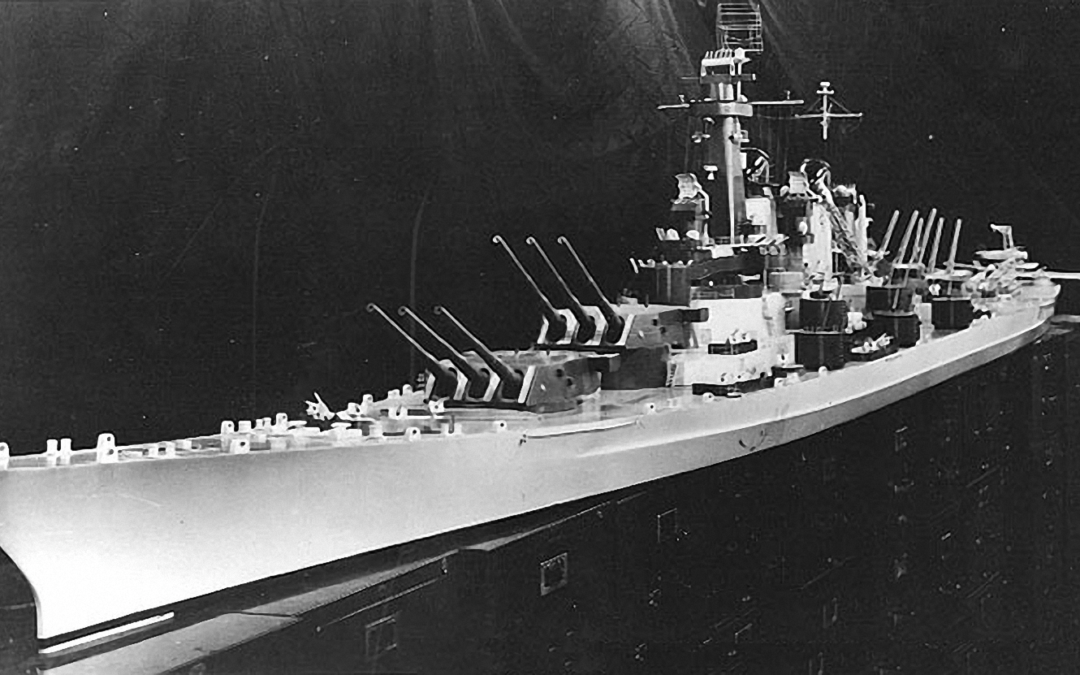
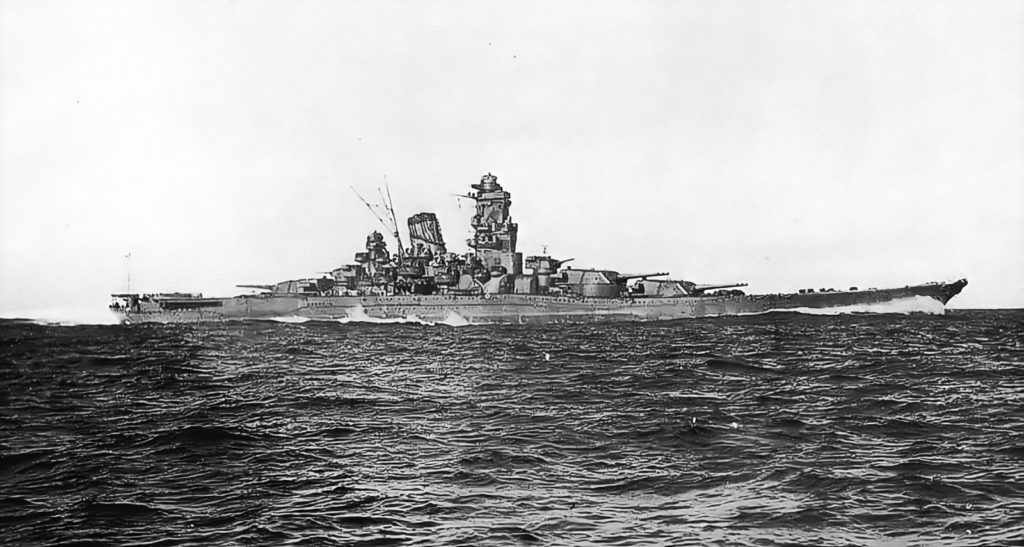
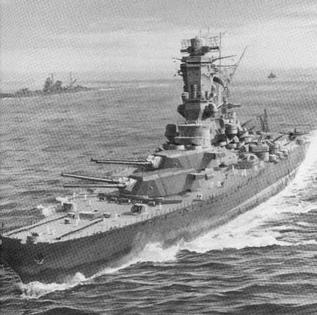
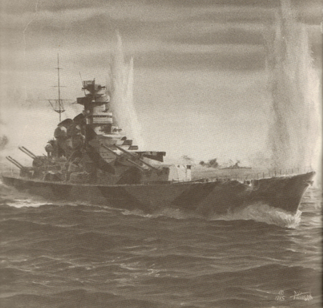
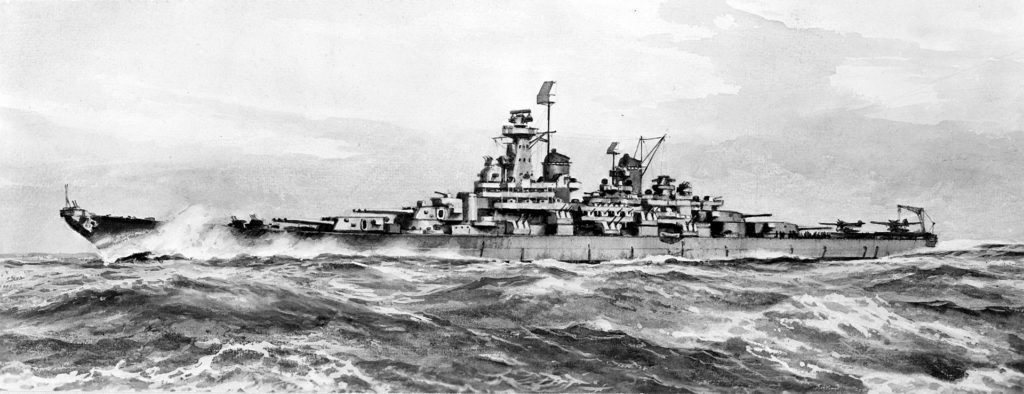
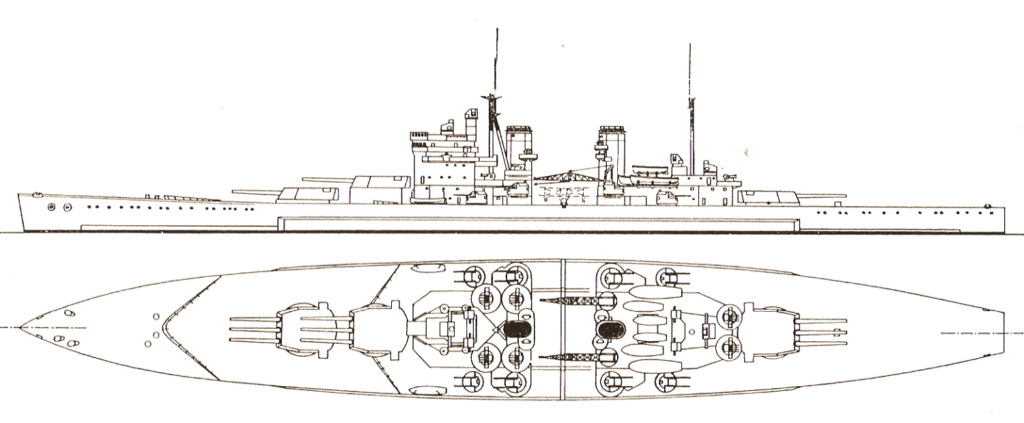
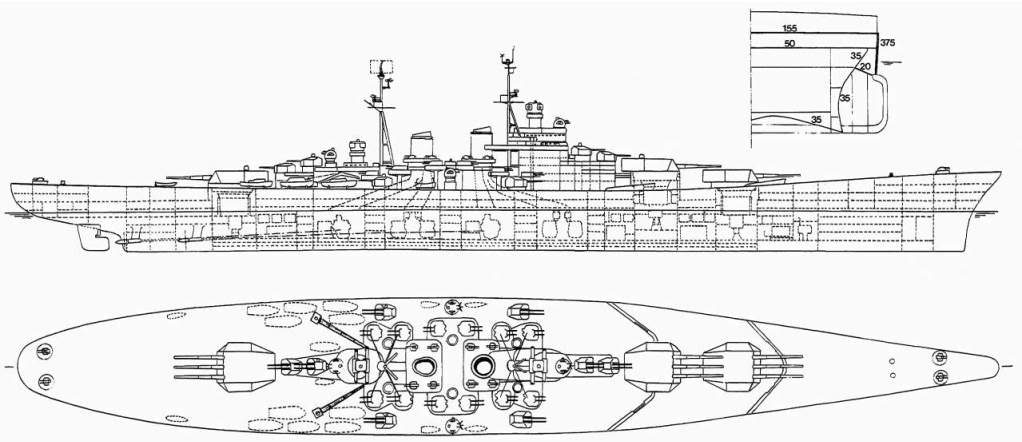

My favorite, and the one that might well had been built, would have been a re-worked Iowa with a broader beam (non-Panama) and less installed machinery and armed with 3 twin 20″/40 caliber guns firing a superweight 6000lb armor piercing shell at a rate of 1.5+ rounds per minute. At 60,000t, the ship would equal a Montana class in broadside, protection, and speed, such that an Illinois, Kentucky, Montana, and Ohio would have had a better chance of remaining in production until completion, although the largest bottleneck would have been the 20″ guns even though they could have been extended versions of existing 16″ gun technology.